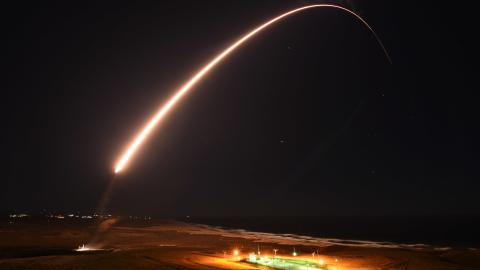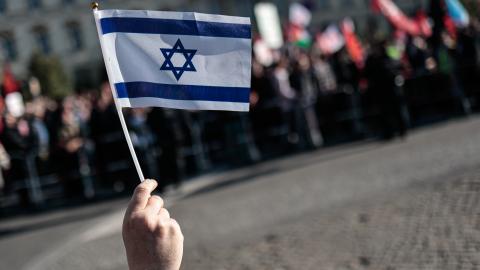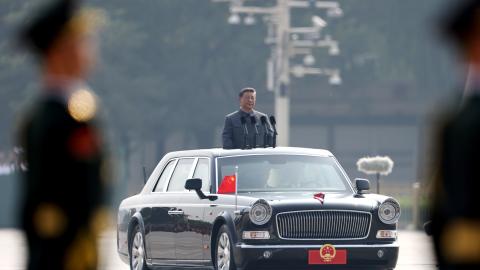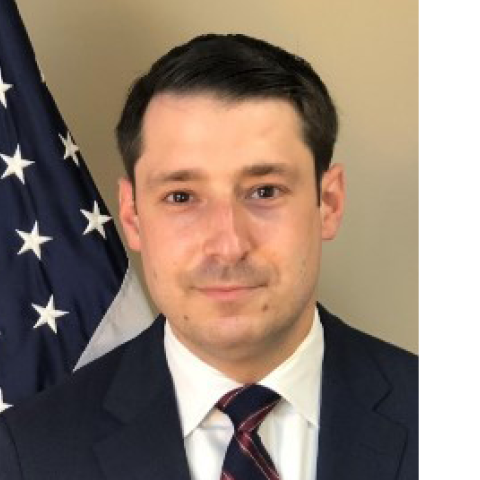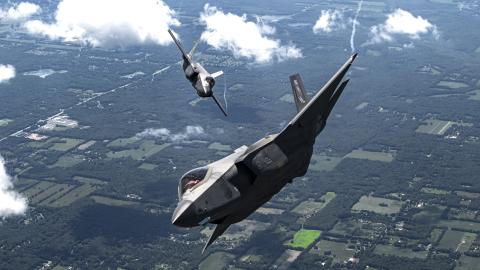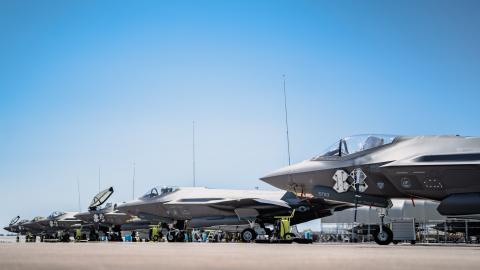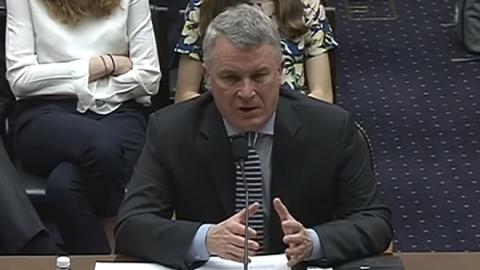On May 22, Michael Doran testified before the U.S. House of Representatives Committee on Foreign Affairs' Subcommittee on the Middle East and North Africa in a hearing titled "Lebanon and Iraq: After the Elections." Following is the full text of Mr. Doran's testimony:
Toward a Two-Speed Strategy
Chairman Ros-Lehtinen, Ranking Member Deutch, members of the subcommittee, it is a privilege to speak to you today. I thank you for the opportunity to testify on the implications of the elections in Iraq and Lebanon. In both countries, the results represent a setback for the United States. In Lebanon, they have obviously strengthened the hand of Hezbollah and Iran. In Iraq, opinion is divided about the extent to which Muqtada al-Sadr’s rise represents a similar victory for Tehran. Even if the final results turn out to be less damaging than the pessimists now predict, there is little doubt that they will complicate American efforts to contain Iran.
These setbacks are but the latest in a long string of Iranian advances. With your permission, I will concentrate on how the United States might, in broad strategic terms, rebound and reverse the trend. I will focus my remarks, in particular, on the strategic implications of President Trump’s decision to withdraw from the Joint Comprehensive Plan of Action. That decision certainly lays the groundwork for a more effective American policy. It will not, however, prove sufficient to turn the tables on Tehran.
The United States, I will argue, should adopt a two-speed strategy in its competition with Iran. It should behave in an aggressive and uncompromising manner in some areas, such as Syria and Yemen, where it enjoys a freer hand; and it should adopt a lighter touch in countries such as Lebanon and Iraq, where conditions are less conducive to an unfettered competition.
Yesterday at the Heritage Foundation, Secretary of State Pompeo announced that the Trump administration intends to shut down Iran’s nuclear program and, in addition, to force it to end its military adventurism and support for terrorism. Secretary Pompeo promised to “apply unprecedented financial pressure on the Iranian regime,” to work “closely with the Department of Defense and our regional allies to deter Iranian aggression,” and to “advocate tirelessly for the Iranian people.
He listed some twelve steps that Iran must take in order for the United States to accept it as a normal member of the family of nations. Iran will not take these steps willingly. Truth be told, the day it complies with all of them will be the day after the Islamic Republic ceases to exist.
The Trump administration, that is to say, has announced a policy of long-term, aggressive containment, not unlike the policy the United States adopted toward the Soviet Union in the Cold War.
We must have no illusions. Success will hinge on grinding down the Iranians—on naked coercion. Secretary Pompeo did not shrink from the question of coercion, but he made it sound easier than it will be. “[W]e will track down Iranian operatives and their Hizballah proxies operating around the world and we will crush them,” he said. The word “crush” is certainly evocative, but how believable is it? Taken literally, it implies that American soldiers will soon be fighting on the ground in Lebanon and Iraq against Iran’s proxies. But that’s not going to happen. For years now, leading figures in both political parties—including President Obama and President Trump—have displayed a deep aversion to open-ended military commitments in the Middle East. The United States, one must conclude, will think twice before attacking Iran’s proxies directly. How, then, does the Trump administration propose to “crush” them?
Perhaps Secretary Pompeo used the word to signal of resolve—to warn Iran not to test us. If so, it is doubtful that his words frightened leaders in Tehran. This is not the first time that they have heard frightful rhetoric from Washington. In the past, American leaders have often failed to match their words with deeds; and even when they have, Tehran has frequently managed to wear down American resolve. The prototypical example, of course, is President Reagan’s decision, in 1983, to dispatch the Marines to Beirut as part of a multi-national peacekeeping force. His staying power dissipated quickly, however, after Hizballah, undoubtedly acting on orders from Tehran, drove two truck bombs into the Marines’ barracks, killing 241 Americans and 58 Frenchmen. The US troops withdrew, and the United States exacted no price from Iran for its aggression.
If President Trump’s resolve is to prove more lasting, he must back it up with a sustained set of coercive policies. Economic sanctions will be a key component of such a policy, but they will not do the job alone. Success will also require the use of force.
Finding the right mix of sanctions and force will prove to be a particularly daunting task, thanks to the size of the coalition opposing President Trump’s decision to abandon the nuclear deal. Significant elements of the national security elite (including parts of the military) strongly disapprove of getting tough with Iran. To make matters worse, European allies, China, Russia, some of the president’s domestic political opponents, and an influential segment of the American media stand ready to use the first sign of trouble to convince the American public that the president is leading the country into the abyss.
Ask yourself this. Would the equivalent of a Marine Barracks bombing today convince skeptics in the national security elite to line up behind the new policy, or would it renew their commitment to destroy it? The challenge before the president is to bring the requisite force to bear against Iran without supporting the accusation that he is behaving with unprecedented recklessness.
His opponents paint the new policy as a choice of war over peace. The “peace” that they extol, however, was appeasement masquerading as a new relationship between fictive Iranian moderates and the West. In reality, the United States was strengthening the Iranian economy while the Revolutionary Guard Corps went on the offensive, spreading its malignant influence by force throughout the Middle East. This phony peace curtailed none of the Iranian ambitions that the United States and its allies find threatening—including Iran’s nuclear program. On the contrary, it fueled those ambitions. Be that as it may, in the eyes of President Trump’s detractors, the problem that most needs solving is his call to coercion, not Iran’s behavior.
For President Trump’s policy to be successful, he need not match Iran move for move. He need only stress the Iranian system in enough arenas simultaneously to make the total cost of its malignant behavior prohibitively high. The United States certainly has the potential to exact such a price, with a relatively minor exertion on its part, but it will require an integrated approach. Historically, the subordination of policy toward each country in the Middle East to a regional Iran strategy has proven notoriously difficult to pull off. In the recent past, for example, the regional priority has been to counter the Islamic State. Iran policy has always been the second priority, if that. As a result, Iranian-backed militias have enjoyed a permissive environment almost everywhere along the line from Baghdad to Beirut.
Those of us who support the president’s new policy, therefore, must strongly urge him to define countering Iran, not the Islamic State, as the top national priority in the Middle East— and to orient the bureaucracies accordingly. One practical way of nudging the administration in the proper direction is to call for a survey of resources across the executive branch. During the George W. Bush administration, in which I served, the State Department carried out an internal assessment that revealed something remarkable: the Department was devoting more personnel to Norway than to Iran. This state of affairs was, in part, a legacy of the Cold War. Secretary of State Condoleezza Rice took immediate steps to bring the allocation of resources into alignment with new priorities.
I strongly suspect that a similar imbalance has once again emerged—and not just or primarily in the State Department. The Obama administration constructed a network of bureaucratic machinery, spanning multiple agencies, to counter the Islamic State. Built as it was on top of the vast counterterrorism apparatus created to fight al-Qaeda, this machinery is now far larger than the actual threat from Sunni terrorism warrants. The Trump administration should call on each agency to survey resources and personnel allocated to the fight against al-Qaeda and the Islamic State, and it should reallocate some percentage of both to the effort to counter Iran.
But reallocating resources is the easy part. Much harder is actually changing policy across the Middle East. To bend our minds around the challenge that President Trump faces, it is helpful to consult a recent report, “U.S. Policy Toward Iran: Strategic Options,” prepared by the Middle East task force of the Bipartisan Policy Center. The report makes no recommendations. Its primary value is in offering us the language for describing the three basic policy options that are on offer: rollback, containment, and modus vivendi.
The Trump administration has now clearly adopted a goal of rollback. However, it has yet to institute policies across the Middle East that will certainly achieve its stated goals. The main problem facing the administration is the legacy of the Obama administration, which completely abandoned rollback as a viable strategy. President Obama’s unstated approach, which he and his senior officials denied when queried, was to seek a modus vivendi with Tehran. Due to the complex political crosscurrents in the Middle East, however, President Obama was not able to carry out a uniform modus vivendi policy. But he certainly came close. In Lebanon, Syria, Iraq, and Yemen, his successor inherited a two-speed strategy that limited American options either to containment or modus vivendi. In each case, the rollback option was simply no longer available.
Trump’s moves have begun to revive the rollback option in certain arenas, but it would be unrealistic to expect administration to implement it everywhere. A uniform rollback policy is unattainable. In countries such as, for example, Lebanon and Iraq, basic prudence calls for a lighter touch. Nevertheless, even in those countries it would not be unreasonable to expect President Trump to stiffen American policy. His broad goal should be to develop a new two- speed strategy, one that relied solely on rollback and containment. In the fullness of time, he should work to eliminate modus vivendi as an option anywhere.
Rollback, of course, implies some use of hard power. It is, therefore, most safely pursued in Syria and Yemen, where the United States and its allies are already engaged in military operations. The case of Syria is particularly noteworthy. In his speech yesterday, Secretary Pompeo called on Iran to “withdraw all forces under [its] command throughout the entirety of Syria.” This demand was new and sweeping. It represents, however, a goal that the American military, has repeatedly rejected. The military’s sole mission in Syria, it has frequently reminded us, is simply to defeat the Islamic State.
Devising coercive policies that support the administration’s aggressive political goals is a task that should occupy the attention anyone interested in the success of President Trump’s Iran policy. The most direct way to achieve this goal would be for Congress to authorize the use of military force against Iran in Syria. From a political point of view, however, this option is probably unrealistic. But that fact need not deter us. The United States also has indirect ways of striking at Iran—ways that do not risk drawing the United States into a quagmire.
The easiest of these is to support allies who already in the fight. Secretary Pompeo’s Syria goals are notable for bringing America’s declared policy into perfect alignment with Israeli policy. In contrast to the United States, Israel is already engaged in military operations whose stated goal is to drive Iran from Syria. We should therefore ask ourselves what actions we might take to strengthen Israel’s hand. Militarily, these might include, on the passive end of the spectrum, positioning our forces so as to deter Russian counterattacks against Israel. On the activist end, they might include arming and training Syrian forces to engage in operations against Iran and its proxies—much as we armed the Mujahedeen in Afghanistan in the 1980s.
Diplomatically, the United States might associate itself much more directly with the red lines that Israel has announced regarding the Iranian presence in Syria. Israel has, for example, called for pushing Iran and its proxies away from its border on the Golan Heights. Who is prepared to say that Washington has done all in its power to demonstrate to Moscow that it fully supports this goal? In short, a policy of greater coordination with Jerusalem is both possible and desirable.
In Yemen, too, greater coordination with Saudi Arabia is worth pursuing. More to the point, if the United States fails to increase support for allies who are directly engaged militarily action against Iran and its proxies, the new rollback policy will likely remain a pious aspiration rather than a realistic plan.
In Lebanon and Iraq, conditions will not support a hard rollback policy. In these countries the goal should be to shift the policy away from modus vivendi and in the direction of containment. In Iraq, the priority, of course, is the dismantlement of the militia infrastructure that the Iranians have built. In Lebanon, many voices have called for an end to American support for the Lebanese Armed Forces. I am much less attracted to this option than to using sanctions to force the Lebanese banking sector to choose between doing business with Hizbollah and Iran or doing business with the United States and its financial institutions.
American policy has repeatedly avoided taking this action for fear of destabilizing Lebanon. In practice, however, heeding this fear has amounted to bowing to Hizballah’s blackmail. It has given Iran a free hand with the predictable results than we now face.
Chairman Ros-Lehtinen, Ranking Member Deutch, and members of the subcommittee, allow me to end with a note of caution. Iran will not take a coercive American policy sitting down. It will strike back—and it will do so cleverly. It has ten obvious levers to pull:
# Adopting a charm offensive in Europe.
# Denying America allies inside Middle Eastern countries, by coopting and coercing key interlocutors.
# Using proxies to take Americans and citizens of allied countries hostage.
# Subjecting American troops in Lebanon, Syria and Iraq to attacks.
# Seeking diplomatic assistance from the Russians and the Chinese, who have a vested interest in seeing American coercion fail.
# Encouraging Hamas and the Palestinian Islamic Jihad to attack Israel.
# Threatening Israel with rocket and missile attacks from Lebanon.
# Precipitating a new nuclear crisis.
# Supporting Sunni terrorist groups even while presenting Tehran as the West’s ally against them.
# Assisting the Taliban.
It almost goes without saying that the United States should begin working with its allies now to develop contingency plans for countering these tactics. I say, “almost,” because I know from experience in the White House that contingency planning is something we extol much more than we actually conduct. As obvious as these tactics are, they have often taken Western decision makers by surprise, and they have proven effective in wearing down Western resolve.
Thank you again for offering me the privilege of addressing you.
